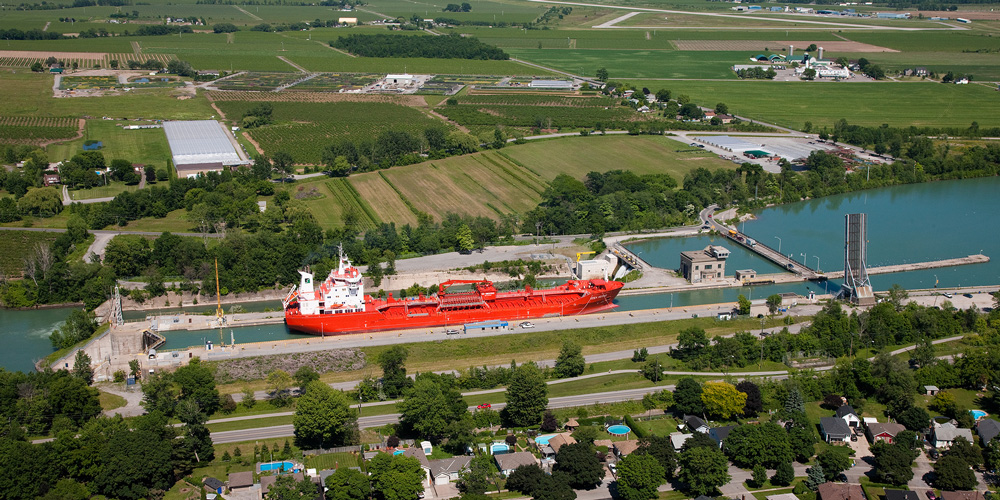Osprey Chick Born in New Home at Iroquois Lock
June 23, 2010
Cornwall, Ontario (June 23, 2010) – A family of ospreys has welcomed the arrival of a new member to their family, while comfortably settled in their new home high atop a perch provided by the St. Lawrence Seaway Management Corporation (SLSMC). The osprey nest, originally built on top of a Seaway crane adjoining the lock, was moved by experts on Friday May 21st to a new location just a few metres away.
Having established a nest for the last two years on top of the Seaway crane, the birds had been able to hatch their eggs, raise their young, and depart for the winter without any fanfare during the previous season. Upon their return this spring, scheduled maintenance requiring use of the crane necessitated the careful relocation of the ospreys and their eggs.
Specialists from Falcon Environmental Services, a firm located in Montreal specializing in the management of wildlife, moved the 50+ kilogram nest to a specially built platform erected at the top of a pole. Within 30 minutes, the osprey family had adopted their new home, some 11 metres (35 feet) above the ground.
Alain Godard, the Seaway manager overseeing the Iroquois Lock, noted that the ospreys are now in a home of a more permanent nature. “We are pleased to see the birds safely perched in their nest on the new platform that Seaway staff erected. We take great pleasure in going about our business without endangering the welfare of our neighbours.”
In general, osprey eggs take five weeks to incubate. Thereafter, the parents will take eight to ten weeks to rear their young, before the new birds can sustain their own wellbeing.
Rick Watchorn, Area Supervisor for the Ontario Ministry of Natural Resources, in reviewing the move of the nest noted that “it is extremely gratifying to work with professionals who take the required time and effort to ensure projects have minimal impact on wildlife. The efforts and documentation shown through this project will certainly be valuable as a best practice for future situations.”






